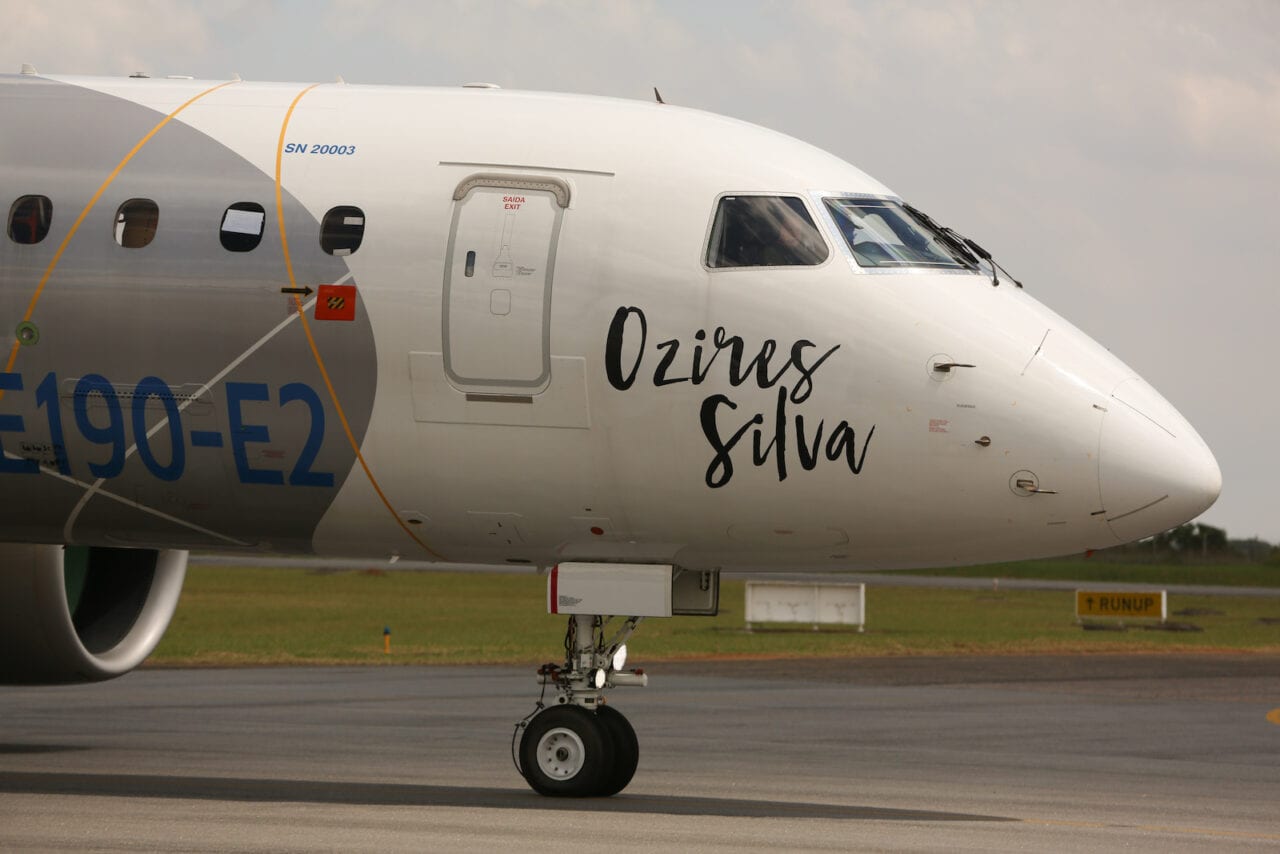
Embraer believes its regional jet family, such as the E190-E2 pictured here, will be well positioned for airline demand once the industry starts to recover from the drop in COVID-19 air travel demand. (Embraer)
Embraer CEO Francisco Gomes Neto said the Brazilian aircraft manufacturer’s regional E-Jets are well-positioned for an eventual recovery from COVID-19’s impact on passenger air travel demand, according to comments made by the executive during their Nov. 10 third-quarter earnings call.
Between January and September, Embraer has seen a net loss of $728.6 million, while delivering just 16 commercial jets and 43 executive jets, compared to a combined 117 commercial and business jet deliveries during the same period in 2019. The company expects deliveries in the fourth quarter to increase compared to the previous three quarters of 2020, especially within its executive jets segment.
Neto and other Embraer executives are confident however that their regional E-Jets airliners will be well-positioned once COVID-19 border and travel restrictions return to normal as they expect regional air travel markets to recover faster than international.
“We believe the domestic and regional markets will rebound first, as it happened in the past as we mentioned. And the airlines, we look for more versatile, flexible, and more economical fleet. And we do believe that our E-Jets are very well-positioned in that direction. So that’s why we believe we have a good chance as soon as the market picks up,” Neto said in response to an analyst question.
The latest passenger travel data published by the International Air Transport Association (IATA) reflects Embraer’s regional optimism, as domestic travel–though still way below 2019 levels–has outpaced international traffic numbers since the implementation of wide-scale air travel regulations in April. KLM Royal Dutch Airlines CEO Pieter Elbers as an example recently said during a webcast hosted by Eurocontrol that his airline is flying 100 percent of its Embraer regional jets.
Embraer CFO Antonio Garcia said another good sign for their position among regional operations came in the third quarter where five E-175s were delivered to United Airlines. During the first and second quarter, Embraer only delivered a combined nine E-Jets.
“During the third quarter, we delivered seven E-Jets representing a sequential improvement compared to the first and second quarters that will accelerate even more in the fourth quarter. Among our third-quarter deliveries, we had five 175s for United Airlines, highlighting our continuous leadership in U.S. regional jet market,” Garcia said.
According to Garcia, 93 percent of the global in-service E-175 fleet remained in operation through the end of September. Embraer has also had no commercial aircraft order cancellations since the outbreak of the COVID-19 pandemic. Two new airlines, Alliance Airlines from Australia and Vietnam-Based Bamboo Airways also received new deliveries and started operations with E-Jets during the quarter.
Other third-quarter highlights for Embraer include the launch of the Phenom 300’s air medical evacuation configuration that is now available as a retrofit for in-service Phenom 300s. At the end of September, Embraer also achieved Brazilian and U.S. regulatory certification for the synthetic vision guidance system (SVGS) featured on its super-midsize Praetor business jet.
The system allows pilots to operate the aircraft to a decision height of 150 feet, as opposed to the regular decision height of 200 feet, increasing operational efficiency and allowing access to several airports during inclement weather and lower ceiling approaches, according to Embraer.
Despite their expectation of a faster recovery in the regional airline market, Garcia is still cautious about 2021 and said COVID-19 pandemic uncertainty is still Embraer’s biggest concern in the foreseeable future.
“We’re lucky to have a broader portfolio, we’re seeing a good performance investor margin for executives and defense and security and services which is more or less tried to compensate the drop in the commercial aviation margin results,” Garcia said. “But we’re going to see the same picture in 2021.”